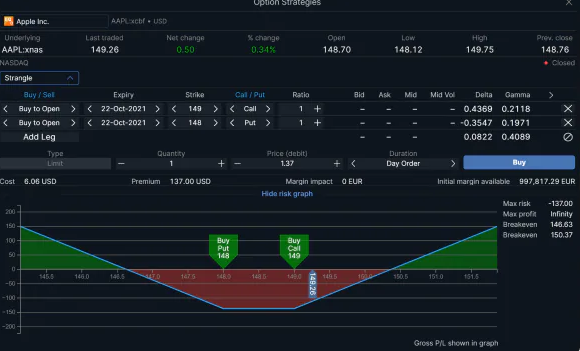Algorithmic trading has been gaining popularity recently as a tool to trade markets.
Algorithmic trading is the process of using computer algorithms to trade stocks or other securities. These computer-generated trades can be executed automatically, making them a convenient tool for investors. In this article, we’ll look at the basics of algorithmic trading and some of the options available to traders. Saxo Bank is one company that offers algorithmic trading platforms with low monthly fees.
What is algorithmic trading, and how does it work?
Algorithmic trading is a type of trading that uses computer algorithms to trade stocks or other securities. These computer-generated trades can be executed automatically, making them an essential tool for investors. Institutional investors, such as hedge funds, often use algorithmic trading to trade large volumes of securities quickly and efficiently.
Algorithmic trading generally works by taking a set of investment rules and running them through a computer program. The program then looks for opportunities to buy or sell securities that meet those criteria. When an opportunity is found, the trade is executed automatically. This type of trading can be helpful for traders who want to take advantage of market opportunities quickly and efficiently.
The benefits of using an algorithm for trading
There are several benefits to using an algorithm for trading. Algorithmic trading can help traders:
Execute trades quickly: Speed is essential when trying to take advantage of a market opportunity. With algorithmic trading, trades can be executed quickly and efficiently.
Reduce emotions: It cannot be easy to remain calm and objective when trading. Algorithmic trading can help remove emotion from trading decisions.
Backtest strategies: Algorithmic trading allows traders to test their investment strategies against historical data to see if they would have been successful.
The different types of algorithms available for trading
There are many different types of algorithms available for trading. Some common types of algorithms include:
Trend following: Trend-following algorithms buy stocks that are rising in price and sell stocks that are falling in price. These algorithms try to profit from the momentum of the market.
Mean reversion: Mean-reversion algorithms buy stocks that are undervalued and sell stocks that are overvalued. These algorithms try to profit from the tendency of prices to revert to their average level over time.
Arbitrage: Arbitrage algorithms take advantage of price differences between different markets. For example, an arbitrage algorithm might buy a stock on one exchange and sell it on another exchange where the price is higher.
Execution algorithms: Execution algorithms help market makers fill orders from clients. These algorithms try to find the best stock prices and execute trades quickly.
How to choose the suitable algorithm for your needs
When choosing an algorithm for trading, it’s essential to consider your investment goals and objectives. Different types of algorithms can be better suited for different types of investors. For example, trend-following algorithms may be more suitable for investors trying to take advantage of market momentum. Mean-reversion algorithms may be more suitable for investors who profit from price differences between different markets.
It’s also important to consider the fees associated with using an algorithmic trading system. Some systems charge a monthly fee, while others charge a per-trade fee. It’s essential to compare the fees charged by different systems to find the one that best suits your needs.
Tips for optimizing your algorithmic trading strategy
You can do a few things to optimize your algorithmic trading strategy. Here are some tips:
When developing your investment strategy, it’s essential to consider multiple timeframes. For example, you might use a long-term trend-following algorithm to identify the market’s overall direction and then use a shorter-term mean-reversion algorithm to take advantage of price fluctuations around that trend.
It’s also important to consider the liquidity of the stocks you’re trading. Less liquid stocks can be more challenging to trade and may incur higher fees.
Finally, it’s crucial to backtest your investment strategy against historical data to see how it would have performed in the past. It will help you identify any potential issues with your strategy and make necessary adjustments.
In conclusion
Algorithmic trading can be a helpful tool for investors. There are many different algorithms available and choosing the right one for your needs is essential. Consider your investment goals and objectives, and compare the fees charged by different algorithmic trading systems before choosing one.












